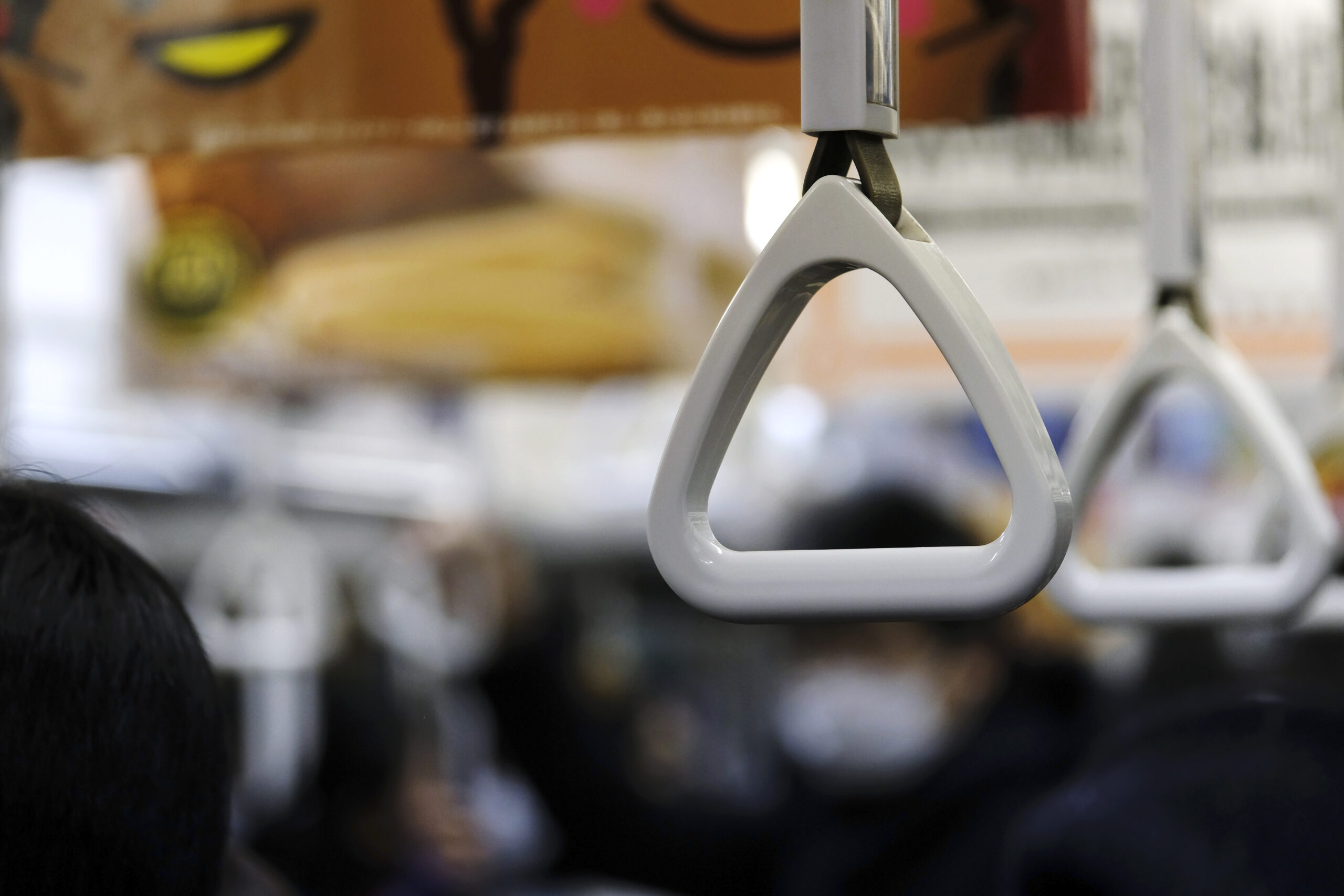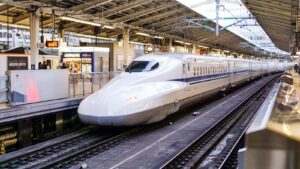Japan’s public transport system is often hailed as one of the most efficient and comprehensive in the world. For travelers, navigating this intricate network can initially seem daunting. Nevertheless, with the right tips and knowledge, you can experience the convenience and speed of Japan’s trains, buses, and trams. Whether you are planning to explore the neon-lit streets of Tokyo or the serene temples of Kyoto, mastering the public transport system is essential for a fulfilling journey. This guide provides essential tips to help you navigate Japan’s public transport like a pro.
Understanding Japan’s Complex Public Transport System
Japan’s public transport is a marvel of modern engineering and organization. The country boasts a vast network of trains, subways, buses, and trams, all designed to connect even the most remote areas. While major cities like Tokyo and Osaka have extensive subway systems, rural areas are often served by local trains and buses, which can also be quite reliable. The sheer scale of this system can be intimidating for first-time visitors, but understanding its structure is the first step toward seamless travel.
The backbone of Japan’s transport system is the railway network, primarily operated by Japan Railways (JR) and a multitude of private railway companies. While trains are the preferred mode of transportation for long distances, buses play a crucial role in connecting areas not serviced by rail. Additionally, ferry services connect various islands, making travel across the archipelago accessible. Learning how these various modes interconnect can greatly enhance your travel experience.
Regardless of where you are in Japan, you’ll find that most train stations are equipped with clear signage and information boards. Many stations also feature English-language announcements, especially in larger cities. However, smaller, local stations may not offer as much information in English, so it’s essential to remain adaptable and resourceful. Familiarizing yourself with basic Japanese phrases can also make navigating the system easier.
Buying a transport ticket is straightforward, but understanding how to use the ticket machines may require some initial effort. These machines often have an English language option, but being prepared to work through the interface will save time and frustration during busy travel periods. It’s advisable to have cash on hand, as some machines may not accept credit cards.
Overall, while Japan’s public transport system may seem complex at first glance, it is designed with the user in mind, making it possible to travel efficiently once you understand the basics. With a little bit of preparation, you can easily navigate from bustling urban centers to tranquil countryside destinations.
Choosing the Right Rail Pass for Your Journey
When considering your travel options in Japan, selecting the appropriate rail pass is paramount to maximizing your experience. The Japan Rail Pass, available exclusively to foreign tourists, provides unlimited travel on most JR trains, including the famous Shinkansen (bullet trains), for a set number of days. Depending on your itinerary, this can be a cost-effective option for long-distance travel, especially if you plan to visit multiple cities.
Aside from the Japan Rail Pass, there are regional passes that cater to specific areas. These include the JR East Pass for travel around Tokyo and northern Japan, the JR Kansai Pass for travel in the Osaka and Kyoto regions, and many more. Each pass varies in pricing and validity, allowing travelers to choose one that aligns with their travel plans. It’s essential to assess your itinerary in detail before purchasing a rail pass, as the savings can be significant.
For those who plan to travel extensively within a single city, metro passes may be more suitable. Cities like Tokyo and Osaka offer prepaid IC cards such as Suica and Pasmo, which can be used on trains, subways, and buses. These cards can be topped up and used seamlessly across various transport modes, eliminating the need to buy individual tickets for each journey. This not only saves time but also makes for a more enjoyable travel experience.
When purchasing rail passes, travelers must also consider the duration of their stay. Passes come in various lengths, ranging from a few days to several weeks. If you’re spending an extended period in Japan and plan to explore in-depth, consider investing in a longer pass, as it can provide unlimited travel and the flexibility to change plans without incurring extra costs.
Lastly, keep in mind that rail passes are often available for purchase online before arriving in Japan. This can streamline the process, ensuring you have all the necessary documentation ready upon arrival. However, some passes may require activation at designated JR stations upon arrival, so be sure to check the details to avoid any surprises.
Decoding Train Lines: JR vs. Private Railways
In Japan, the railway system is made up of two main categories: Japan Railways (JR) and private railways. Understanding the differences between these two will significantly impact your travel experience. JR is a large, government-run network offering extensive coverage across the country, connecting major cities and regions via Shinkansen and conventional trains. It is generally viewed as the backbone of Japan’s rail transport system, providing reliable and frequent services.
On the other hand, private railways are often smaller and region-specific, operating in areas that may not be serviced by JR. Examples include the Odakyu Electric Railway, which connects Tokyo to Hakone, and the Keio Line, serving the Shinjuku area. Private railways can also provide scenic routes, making them popular for tourists seeking out picturesque views. However, they do not typically accept the Japan Rail Pass, so travelers need to factor in additional fares when using these services.
Traveling on JR trains often means a higher degree of comfort and speed due to the advanced technology and infrastructure employed. The Shinkansen, for example, can reach speeds of up to 320 km/h (200 mph), making it the fastest way to travel between cities. Conversely, private railways may offer a more local experience, allowing travelers to explore smaller towns and attractions that are less frequented by tourists.
One thing to keep in mind is that while JR trains generally have less frequent stops, private railways can become the perfect choice for travelers looking to visit regional destinations. Both systems are well-coordinated, ensuring smooth transfers and connections, but understanding the nuances can help travelers optimize their itineraries.
Additionally, the ticket purchasing process varies between JR and private railways. While JR ticket machines are commonly available in English, private railway stations may not always offer the same level of language support. Being prepared with a translation app or basic Japanese phrases can ease this process.
Ultimately, knowing when to use JR versus private railways will enhance your Japanese travel experience, allowing you to appreciate both the efficiency of the national system and the charm of local routes.
Essential Apps for Navigating Japan’s Transport Network
In the age of technology, having the right mobile apps can drastically enhance your travel experience in Japan. One of the most useful apps for navigating public transport is HyperDia, which provides detailed train schedules, route information, and fare estimates. It allows you to input your departure and arrival stations and presents multiple travel options, including transfers and travel times. HyperDia is a must-have for any traveler keen on maximizing their time and efficiency while getting around.
Another essential app is Google Maps, which offers extensive public transport directions in English. The app provides real-time updates and directions for trains, buses, and walking paths, making it easy to navigate unfamiliar areas. With integrated features like estimated arrival times and notifications about delays, Google Maps is invaluable for those who prefer to explore cities on foot.
For those relying on buses and subways, the app Japan Transit Planner can be particularly useful. This app specializes in public transport information, including bus routes and schedules. It provides detailed information about local transport options that may not be included in other apps, ensuring you’re well-informed about your travel choices.
If you plan to use prepaid IC cards like Suica or Pasmo, downloading the Suica app can streamline your journey. It allows you to manage your card balance and top up easily, making transactions smoother and faster. With the ability to check your balance directly from your phone, you can avoid the hassle of ticket machines altogether.
For language assistance, consider using Google Translate or iTranslate, which can help you understand signs and menus while traveling. Both apps feature real-time translation capabilities, allowing you to point your camera at Japanese text and receive immediate translations. This can be invaluable in train stations where announcements and signage are predominantly in Japanese.
Lastly, remember to download any relevant apps and familiarize yourself with their features before your trip. This will allow you to navigate the public transport system in Japan more efficiently, ensuring a stress-free travel experience.
Mastering Timetables: When to Catch Your Train
Japanese trains are renowned for their punctuality, and understanding the timetable is crucial for efficient travel. Most train schedules are available online through various apps and websites, providing travelers with up-to-date information about departure times, delays, and platform numbers. Familiarizing yourself with the timetable ahead of time can help you plan your day effectively and avoid unnecessary waiting.
Typically, trains run frequently throughout the day, especially in urban areas. For example, during peak hours, some lines can have trains arriving every few minutes. However, it is essential to check the specific timetable for your chosen route, as the frequency may vary during off-peak hours or in rural areas. Utilizing apps like HyperDia allows you to view real-time train schedules directly on your phone, so you can make informed decisions.
When planning your trip, consider arriving at the station at least 10 minutes before your scheduled train departure. This allows you ample time to locate your platform and navigate through the station, which can sometimes be complex, especially in major hubs like Tokyo Station. Additionally, it gives you a buffer in case of any unexpected delays or changes.
Understanding the difference between express and local trains is also critical. Express trains skip certain stations along their routes, significantly reducing travel time between major destinations. However, if you’re traveling to a smaller town or station, you may need to take a local train that stops at every station. Always check which type of train is best suited for your journey and its timetable.
Another factor to consider is seasonal variability. During holidays or festivals, train schedules may differ, and additional services can be introduced. Be sure to check for any special timetables during popular travel periods to ensure you do not miss out on your desired train.
Finally, keep in mind that trains in Japan are usually very punctual, so it is advised not to be late. If you miss a train, the next one will arrive shortly after, but it’s always best to plan ahead and give yourself enough time to catch your scheduled ride.
Etiquette on Trains: Do’s and Don’ts for Travelers
When traveling on Japan’s public transport, it’s essential to understand and respect the local etiquette. Japanese people take pride in their trains, and there are a few unspoken rules that travelers should follow to ensure a pleasant experience for everyone. First and foremost, maintain a quiet demeanor. Speaking loudly or engaging in animated conversations can be disruptive to fellow passengers, especially in the serene atmosphere of a train carriage.
Another critical etiquette rule is to avoid eating or drinking on trains unless you are on longer journeys or in designated areas. While it is common to see travelers enjoying their bento boxes on the Shinkansen, it’s important to be mindful of your surroundings. If you do eat, ensure that you clean up after yourself and dispose of waste properly. Many trains and stations have designated bins for trash and recycling.
When boarding or alighting trains, always allow passengers to exit before entering. This common courtesy helps maintain a smooth flow of people and prevents congestion at the doors. Additionally, if you have large luggage, it’s advisable to refrain from using the priority seating areas, which are often designated for elderly passengers, pregnant women, and those with disabilities.
While most train stations and trains have clear signage, it is polite to give up your seat to those who may need it, especially during busy commuting hours. This gesture is welcomed and expected in Japan, reflecting the culture’s emphasis on respect and consideration for others.
Traveling with children can also bring unique challenges. If traveling with young ones, ensure they are seated and not causing a disturbance to other passengers. Many trains provide family-friendly seating areas, and taking advantage of these spaces will make your journey smoother for everyone involved.
Lastly, it’s worth noting that mobile phone use should be kept to a minimum on trains. While using your phone for navigation is acceptable, conversations or loud notifications can disrupt others. Many trains have designated areas for phone use, so it’s wise to adhere to these guidelines.
By understanding and following these key etiquette rules, travelers can enjoy a respectful and enjoyable experience while navigating Japan’s public transport system.
Buying Tickets: A Step-by-Step Guide for Tourists
Purchasing tickets for Japan’s public transport can be a straightforward process once you understand the steps involved. First, identify your starting and destination stations and determine the type of transport you will be using – whether it’s a JR train, subway, or private railway. Once you have this information, you can proceed to the ticket machines, which are widely available at stations across the country.
Most ticket machines have an English language option, making it easier for tourists to navigate the interface. Select "English" from the language options, and the machine will guide you through the process. First, choose your destination from a map or a list; this will display the fare you need to pay.
After selecting your destination, input the number of tickets you wish to purchase. The machine will then prompt you to insert cash or a credit card, depending on the payment options available. It’s advisable to have small denominations of yen, as not all machines accept large bills or credit cards.
Once you have completed the payment, the machine will dispense your tickets. In some cases, you may also receive a receipt that outlines your travel details. Ensure that you keep your ticket until the end of your journey, as you will need it to exit the station at your destination.
If you plan to use an IC card like Suica or Pasmo, the process is even simpler. These rechargeable cards can be purchased at ticket machines or convenience stores, and you can load them with money. To use the card, simply tap it on the designated card reader at the entry and exit gates of the station. This eliminates the need for physical tickets and allows for smooth travel.
Lastly, should you require assistance, don’t hesitate to approach station staff, who are generally very helpful and often speak some English. Many larger stations also have tourist information centers where you can receive guidance on purchasing tickets and planning your journey.
Getting Around Cities: Buses, Trains, and Trams
Navigating cities in Japan often involves a combination of buses, trains, and trams, each offering unique advantages based on your travel needs. In major metropolitan areas like Tokyo, the extensive rail network can take you virtually anywhere within the city and neighboring regions. The convenience of trains is complemented by local buses that serve areas not directly accessible by rail.
In Tokyo, the subway system is a popular choice for travelers, offering numerous lines that connect to key attractions. The Tokyo Metro and Toei Subway systems operate independently, so it’s essential to familiarize yourself with which line you will need to take. While the train system is comprehensive, buses can also be a convenient option for reaching specific neighborhoods that may not be serviced by trains.
In cities like Kyoto, trams play an important role in public transport. The city’s tram system provides a scenic means to explore historical sites and local neighborhoods. Familiarizing yourself with tram routes can enhance your sightseeing experience, allowing you to enjoy the charm of the city as you travel.
When using buses, it’s important to note that boarding typically occurs from the rear and disembarking from the front. Each bus will have a display indicating the next stop, and fare collection may occur upon exiting the bus. It’s advisable to have cash on hand when using buses, as some may not accept IC cards.
For tourists seeking a more leisurely experience, many cities also offer bike rental services or walking tours, allowing for a personal exploration of local culture and attractions. Biking is especially popular in cities like Kyoto, where the flat terrain and scenic routes make it an enjoyable way to see the sights.
Overall, while trains are often the fastest mode of transport in Japan, buses and trams can provide a unique perspective on city life and are essential for reaching certain destinations. Understanding the interplay between these transport options will help you navigate Japan’s urban landscapes with ease.
Language Barriers: Overcoming Communication Challenges
When traveling through Japan, language barriers can pose a challenge, especially for those who do not speak Japanese. However, the good news is that many Japanese people are eager to assist travelers, and there are several ways to overcome these obstacles. First, familiarizing yourself with basic Japanese phrases can go a long way. Simple words like "Arigato" (thank you) and "Sumimasen" (excuse me) can help you navigate social interactions and demonstrate respect for the local culture.
In larger cities, many signs and announcements are available in English, particularly at train and subway stations. Tourist-friendly areas typically have good English-language support, making it easier to find information. However, in smaller towns or rural areas, English may not be as prevalent, so being prepared is key.
Mobile translation apps, such as Google Translate, can bridge the communication gap effectively. This technology allows you to translate spoken words, written text, or even images of signs in real-time. Having such a tool on hand can enhance your travel experience, allowing you to engage more fully with your surroundings.
When using public transport, it can be helpful to display your destination on your smartphone or a piece of paper to show to station staff or fellow travelers. This can assist in getting directions or assistance when you are uncertain. Many Japanese people are willing to help, and pointing to your destination can often lead to someone guiding you or providing you with the information you need.
Additionally, learning to recognize common transport-related kanji (Chinese characters used in Japanese writing) can also be beneficial. Characters like "eki" (駅) for station or "kippu" (切符) for ticket frequently appear in transportation contexts. Even a bit of knowledge in this area can help you navigate stations and signs more confidently.
Finally, don’t hesitate to reach out for help when you need it. Many train staff speak English, especially in larger train stations. Approaching them with a friendly smile and a clear inquiry can lead to the assistance you require, making your travel experience smoother and more enjoyable.
Tips for Traveling with Luggage on Public Transport
Traveling with luggage in Japan requires some planning, especially considering the efficiency of the public transport system. The first step is to choose appropriate luggage. A suitcase with wheels is ideal, as train stations often have escalators and elevators, making it easier to navigate through busy terminals. However, be mindful of the size and weight of your luggage, as large bags can become cumbersome in crowded situations.
If you’re planning to travel on the Shinkansen or long-distance trains, consider using the luggage storage services available at many stations. These services allow you to drop off your bags safely while you explore the city. Additionally, many hotels offer luggage forwarding services, allowing you to send your bags directly to your next accommodation. This option can be especially convenient if you are traveling on the go.
When using trains, be sure to arrive at the station early to allow yourself enough time to maneuver through the crowds. Once on board, utilize the overhead storage compartments for smaller bags and suitcases. However, larger suitcases should be placed in designated luggage areas at the end of each carriage, ensuring they are out of the way of passengers moving through the aisles.
On buses, space can be more limited, so it’s advisable to travel with smaller bags that can fit comfortably at your feet or on your lap. If you must carry a larger bag, try to board early to secure a spot for it and make sure it doesn’t obstruct other passengers.
Traveling during off-peak hours can also make a significant difference. Trains and






